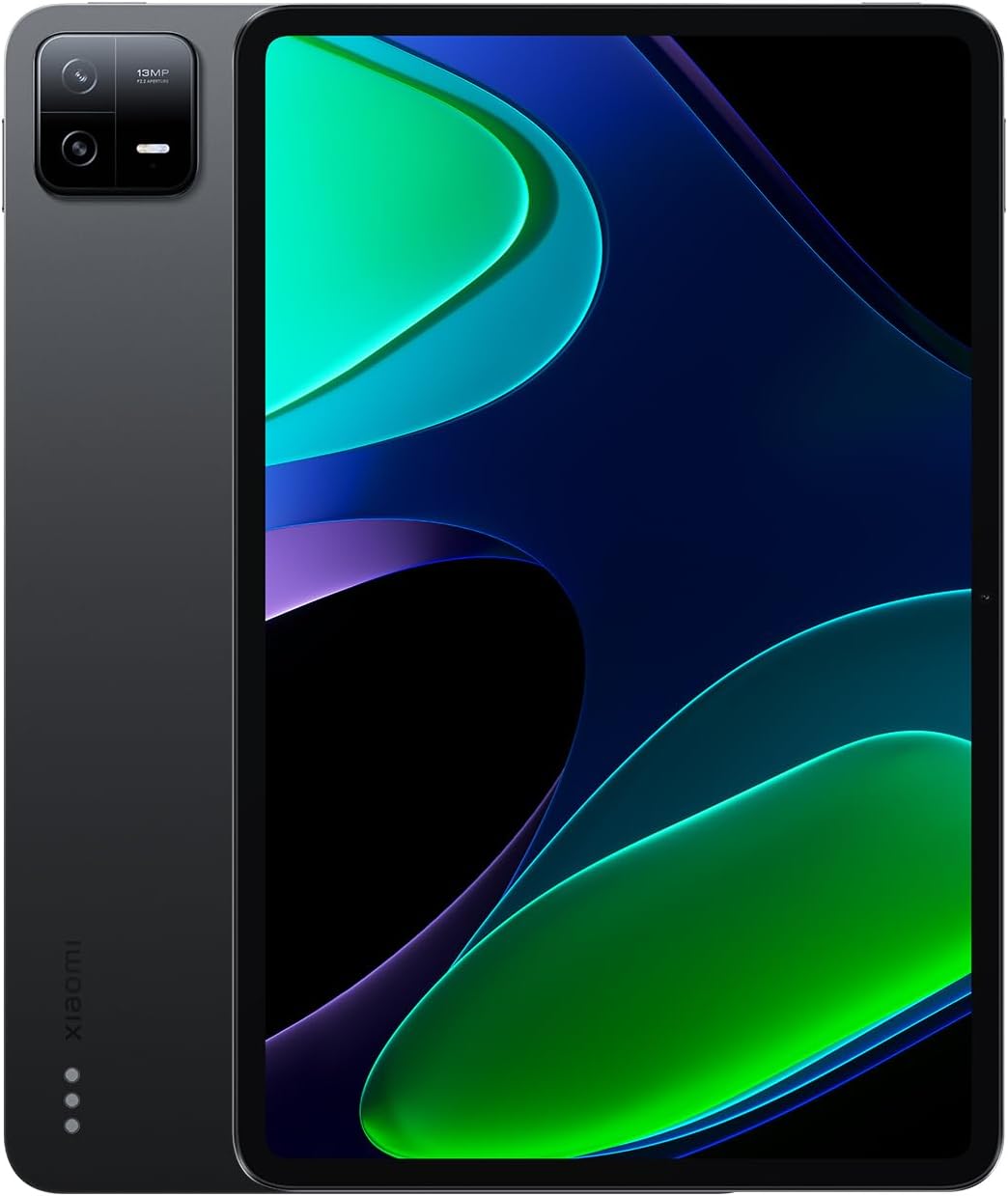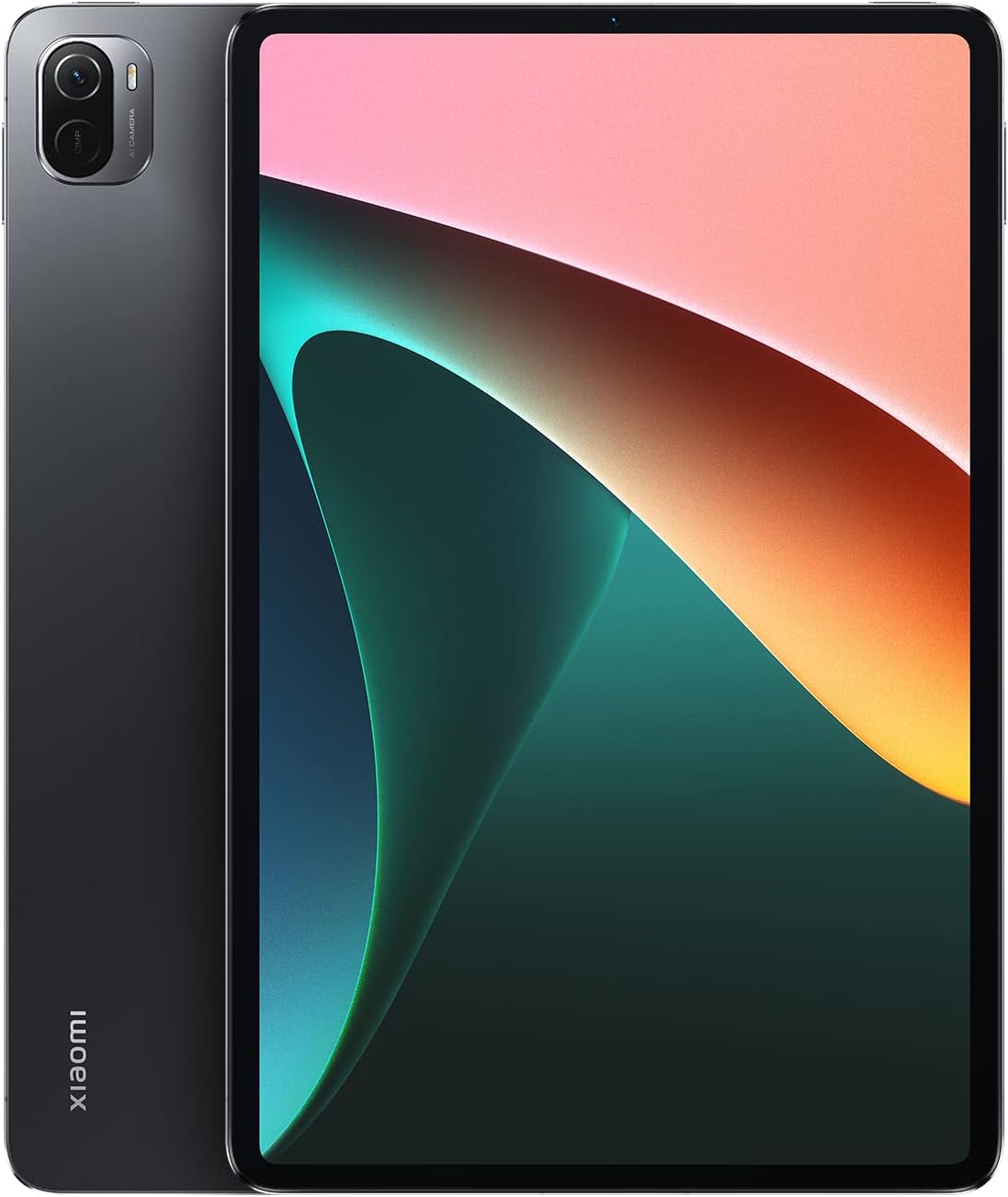|
Our recommendation! Xiaomi Pad 6
Screen: 11 inches |
Good opinions! Xiaomi Pad 5
Screen: 11 inches |
If you are one of those who uses the tablet to check information, to send emails, or simply as a complement to the laptop when you go on a trip or when you are at home, you will be interested in this review. In it, we compare two of the best-selling tablets in the Xiaomi range: Xiaomi Pad 6 and Pad 5. As you can imagine, being one successive of the other, there are quite a few similarities between them, but there are also differences that are worth looking at to answer a question: Is it worth updating the tablet?
We start by telling you that the economic difference is not very big, which makes us imagine that both tablets will have a very continuous line. For example, if we look at the screen, we see that they maintain the same size, 11 inches, although the Xiaomi Pad 6 has some small improvements. Specifically, it has more resolution and is protected by Corning Gorilla Glass 3, unlike the Pad 5.
The processor they have is the same, only in the Pad 6 there is a more updated version that makes the performance, in general, superior. The same happens with the battery, whose capacity is slightly increased in the Xiaomi Pad 6. However, if we check the cameras, we see that there have been no changes between both tablets. And, in case you’re wondering, none of them include the Smart Pen in their standard equipment.
The best way to check which Xiaomi tablet is more interesting is by analyzing and comparing them in depth. Can you come with us?
Xiaomi Pad 6 vs Xiaomi Pad 5 – Comparative table
Do you want to know what the most important differences are between the two Xiaomi tablets? We analyze all its specifications in the following table, so you can check which one best suits what you are looking for:
Xiaomi Pad 6
|
Xiaomi Pad 5
|
|
| Dimensions | 253,95 x 165,18 x 6,51 mm | 254,69 x 166,25 x 6,85 mm |
| Weight | 490 grams | 511 grams |
| Colors | Grey, champagne and mist blue | Pearl white and cosmic gray |
| Screen type | LCD | LCD |
| Screen size | 11″ | 11″ |
| Resolution | 2880 x 1800 pixels | 1600 x 2560 pixels |
| Glow | 550 nits | 500 nits |
| Processor | Qualcomm® Snapdragon™ 870 | Qualcomm® Snapdragon™ 860 |
| OS | MIUI 14 for Pad (Android 13) | MIUI 12.5 for Pad (Android 11) |
| Storage | 6 GB + 128 GB, 8 GB + 128 GB, 8 GB + 256 GB | 6 GB+128 GB, 6 GB+256 GB |
| Frontal camera | 8 MP | 8 MP |
| Rear camera | 13 MP | 13 MP |
| Battery capacity | 8840 mAh | 8720 mAh |
| Type of load | 33 W | 22.5 W |
| Connectivity | Bluetooth 5.2 and WiFi 6 | Bluetooth 5.0 y WiFi 802.11a/b/g/n/ac |
| Microphones | 4 | 2 |
| Speakers | 4 | 4 |
| Sensors | Accelerometer, gyroscope, ambient light sensor, Hall sensor | Gyroscope, accelerometer, light sensor, compass and hall |
| Pencil included | No | No |
Few design changes
The two Xiaomi tablets have a design with a very similar aesthetic, something that is greatly influenced by the fact that the screen is the same size. Xiaomi reduces the weight a bit on the Pad 6, which weighs about 20 grams less. Additionally, it is available in three colors, while the Pad 5 is only available in two. Another small difference is found on the back, in the design of the cameras. The Xiaomi Pad 5 has a smaller space for the cameras, while the Xiaomi Pad 6 opts for a more square shape.
The screen, slight evolution
Both tablets have an 11-inch screen, so when it comes to size, there are no differences. However, the Xiaomi Pad 6 has a better resolution screen than its little sister, and this also makes the brightness higher. We have to say that, in certain lighting conditions, the improvement that the Pad 6 has compared to the Pad 5 is very noticeable.
On the other hand, the screen of the Xiaomi Pad 6 has Corning Gorilla Glass 3 certified protection, which makes it more resistant than the screen of the Xiaomi Pad 5. Likewise, the refresh rate goes from 120 Hz on the Pad 5 to 144 Hz on the Pad 6, which provides a softness and sharpness to the images that is very appreciated.
Does the processor and operating system change?
Rather than changing, let’s say it is updated. Both tablets have the Snapdragon processor, only the Xiaomi Pad 6 has the 870 version, while the Pad 5 has the 860. It seems like a smaller difference than it really is, since the tablet’s processing speed has improved a lot. The Xiaomi Pad 6 supports the coexistence of several more demanding applications better than the Pad 5, and has more storage space in its RAM memory.
The operating system, like the processor, has been updated, going from MIUI 12 to MIUI 14. Or, in other words, they go from a system based on Android 11 to one based on Android 13.
Are the cameras the same?
Practically, yes, Xiaomi has not implemented any changes when it comes to the cameras. Both the Xiaomi Pad 5 and Pad 6 have an 8-megapixel front camera, and a 13-megapixel rear camera. The only difference is that the Pad 6 incorporates a depth sensor that improves some images, although it is not a difference to be decisive.
Same evolution in the battery
Another important aspect that we must consider when we are thinking about which tablet to buy is the autonomy they offer. In reality, it is more convenient to look at the battery capacity, since the autonomy depends, rather, on the use we give it. In this sense, we went from an 8720 mAh battery in the Xiaomi Pad 5 to an 8840 mAh battery in the Pad 6. As you can see, it is a small difference that, to be honest, is not going to have a great effect on the autonomy of the tablet. It has more capacity to extend the battery even up to 2 days, but that would practically mean not using it.
Connectivity and technology

The two Xiaomi tablets can be synchronized with Bluetooth, although the Pad 6 supports version 5.2, while the Pad 5 stays at 5.0. Likewise, they are compatible with WiFi. The main difference in terms of connectivity is that only the Xiaomi Pad 6 includes a USB3.2 Gen 1 port for data transfer. That is, if you want to connect the tablet to another device, you will only be able to do so via USB with the most recent model. This difference may be more important in the work environment, if you want to share a corporate presentation on a larger screen, for example.
It should also be noted that if you regularly make video calls with the tablet, they will be of better quality on the Pad 6. Both have 4 speakers, but the Pad 6 has 2 more microphones than the Pad 5. This makes the clarity when it comes to transmitting our voice is better on Xiaomi’s newest tablet.
Finally, they do not include the Smart Pen as standard equipment, but you can purchase it separately.
Is it worth going from the Xiaomi Pad 5 to the Xiaomi Pad 6?
Now that we have analyzed the most important differences and similarities between the two Xiaomi tablets, it is time to answer the question with which we started the comparison. And, to be completely honest, it is not worth upgrading if you already have the Xiaomi Pad 5. The differences there are all quite moderate, there is none that makes us consider the possibility that it is worth making an extra investment for the new model . In fact, the difference that seems most decisive to us is the possibility of connecting the tablet with other devices if you use it as a work tool.
Now, if you don’t have either of the two, we recommend opting for the Xiaomi Pad 6. For a fairly similar price, you enjoy those small improvements, but without having already spent the money on the Pad 5. Xiaomi will probably soon launch its next tablet, and maybe then, if you already have the Pad 5, you can consider renewing it. But, for the moment, they maintain a very continuous line with few differences.
On the other hand, it is advisable to be aware of the economic offers that are available. In some cases, if one of the two has a large discount, it can be an interesting decision element. Just depend of you!




